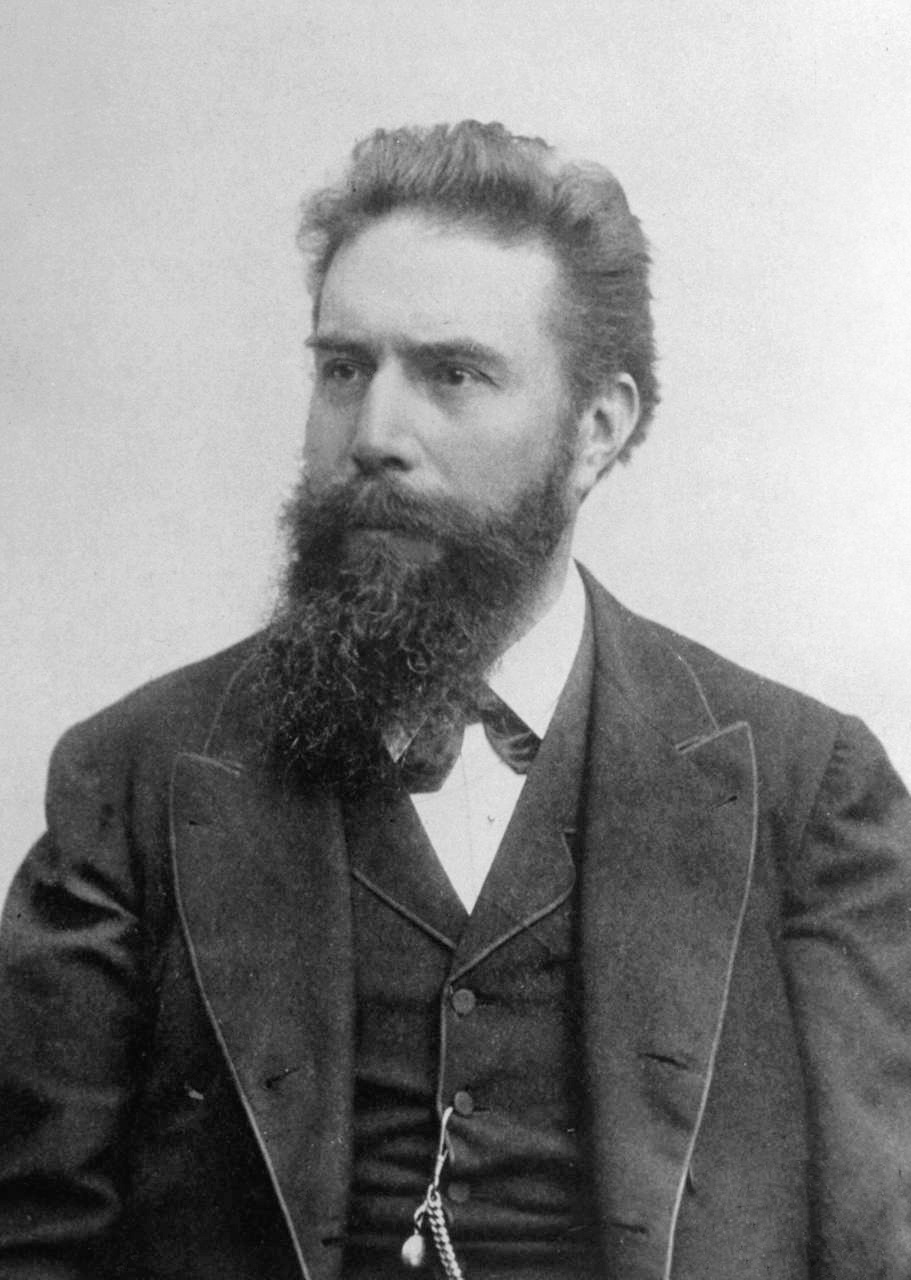Wilhelm Conrad Roentgen: Difference between revisions
| (5 intermediate revisions by the same user not shown) | |||
| Line 1: | Line 1: | ||
claimed BY ARIANNA | claimed BY ARIANNA GUASCH | ||
[[File:Roentgen2.jpg]] | |||
| Line 14: | Line 18: | ||
===Education=== | ===Education=== | ||
His earlier education was in Apeldoorm, but his later education was in Ambachtsschool; a technical school in Utrecht( 1862). Later, he was admitted to the Federal Polytechnic Institute in Zurich. There, he began his studies by majoring in mechanical engineering. He graduated in 1869, with a Ph.D. , and there he met two important and influential teachers one being August Kundt. | |||
===Career=== | ===Career=== | ||
After graduating, he went to the University of Strasburg, and he taught Physics there (1876). He was also a professor of physics at the universities of Strasbourg (1876–1879), Giessen (1879–1888), Würzburg (1888–1900), and Munich (1900–1920). He began his research with electrical charge and the effects and response of these in vacuum tubes. | |||
==His Work== | ==His Work== | ||
He was mostly known for his work with electric charge, and vacuum tubes were he discovered the X-Ray. Since 1895, he had been working with the effects of cathode rays since a long time. While doing his research, he noticed something when he connected a vacuum tube called a Hittorf-Crookes tube to an electrostatic charge generator.He was trying to make a fluorescent effect that he had previously noticed in with another vacuum tube called a Lenard tube. The filament inside produced a beam of electrons called a cathode ray. He noticed that this produced, fluorescence on a screen covered with a compound called barium.What happened was that the cathode ray cause movement of the atoms in the aluminum which caused excitement in the atoms of the barium, which caused the fluorescent effect and created the X-rays. | |||
===Contributions=== | ===Contributions=== | ||
- Discovery of the X-Ray | |||
===Accomplishments=== | ===Accomplishments=== | ||
In 1901 Röntgen was awarded the very first Nobel Prize in Physics. | |||
==The X-ray== | ==The X-ray== | ||
This is the picture of Roentgen wife's hand. Which is when he discovered X-Rays. | |||
[[File:16first-190.jpg]] | |||
== See also == | == See also == | ||
Check Out this video about the Discovery of The Xray! | |||
[https://www.youtube.com/watch?v=uvffV9ArtA0] | |||
===Further reading=== | ===Further reading=== | ||
http://www.nobelprize.org/nobel_prizes/physics/laureates/1901/rontgen-bio.html | |||
===External links=== | ===External links=== | ||
==References== | ==References== | ||
[[Category:Which Category did you place this in?]] | [[Category:Which Category did you place this in?]] | ||
Latest revision as of 23:52, 5 December 2015
claimed BY ARIANNA GUASCH
Wilhelm Conrad Roentgen was a German physicist who won the first Nobel Prize in Physics for his work with electromagnetic radiation, and the invention of the X-Ray.
Biography
A short description of important events in Roentgen's Life.
Early Life
Wilhelm Conrad Roentgen was born on March 27, 1845 in Lennep, Prussia, which is now Remscheid, Germany. He was born into a merchant family, Friedrich Conrad Roentgen and his wife Charlotte Constanze Frowein. He grew up in Apeldoorm, and this is where he received his early education. His secondary eduaction he received at a private boarding school called Institute of Martinus Herman van Doorn in Apeldoorm.
Education
His earlier education was in Apeldoorm, but his later education was in Ambachtsschool; a technical school in Utrecht( 1862). Later, he was admitted to the Federal Polytechnic Institute in Zurich. There, he began his studies by majoring in mechanical engineering. He graduated in 1869, with a Ph.D. , and there he met two important and influential teachers one being August Kundt.
Career
After graduating, he went to the University of Strasburg, and he taught Physics there (1876). He was also a professor of physics at the universities of Strasbourg (1876–1879), Giessen (1879–1888), Würzburg (1888–1900), and Munich (1900–1920). He began his research with electrical charge and the effects and response of these in vacuum tubes.
His Work
He was mostly known for his work with electric charge, and vacuum tubes were he discovered the X-Ray. Since 1895, he had been working with the effects of cathode rays since a long time. While doing his research, he noticed something when he connected a vacuum tube called a Hittorf-Crookes tube to an electrostatic charge generator.He was trying to make a fluorescent effect that he had previously noticed in with another vacuum tube called a Lenard tube. The filament inside produced a beam of electrons called a cathode ray. He noticed that this produced, fluorescence on a screen covered with a compound called barium.What happened was that the cathode ray cause movement of the atoms in the aluminum which caused excitement in the atoms of the barium, which caused the fluorescent effect and created the X-rays.
Contributions
- Discovery of the X-Ray
Accomplishments
In 1901 Röntgen was awarded the very first Nobel Prize in Physics.
The X-ray
This is the picture of Roentgen wife's hand. Which is when he discovered X-Rays.
See also
Check Out this video about the Discovery of The Xray!
Further reading
http://www.nobelprize.org/nobel_prizes/physics/laureates/1901/rontgen-bio.html
